Top speed 207 km/h Range 350 km Length 8.5 m | Wingspan 17 m Cruise speed 174 km/h Unit cost 10,000,000–10,000,000 USD | |
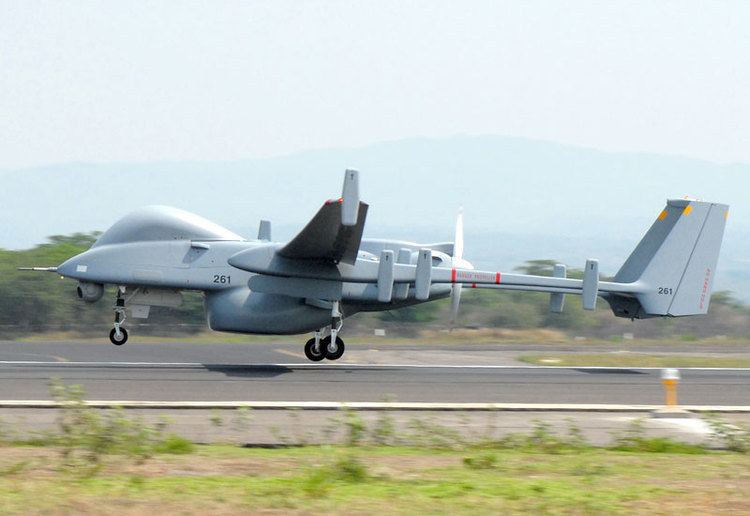 | ||
Eye in the sky iai heron
The IAI Heron (Machatz-1) is a medium-altitude long-endurance unmanned aerial vehicle (UAV) developed by the Malat (UAV) division of Israel Aerospace Industries. It is capable of Medium Altitude Long Endurance (MALE) operations of up to 52 hours' duration at up to 10.5 km (35,000 ft). It has demonstrated 52 hours of continuous flight, but the effective operational maximal flight duration is less, according to payload and flight profile. There is a new version, Heron TP, also known as IAI Eitan.
Contents
- Eye in the sky iai heron
- Iai heron 1 evaluation at emmen
- Design and development
- Super Heron
- Operational history
- Heron variants
- Operators
- Specifications
- References
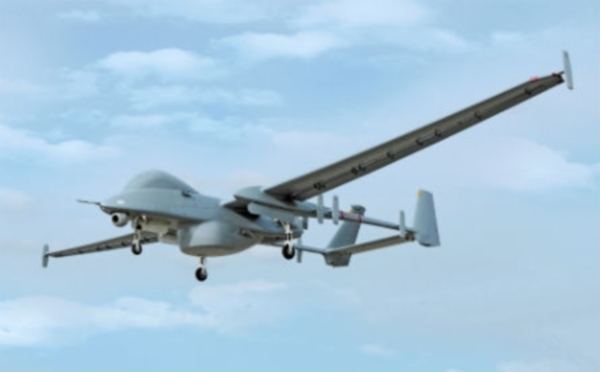
On 11 September 2005, it was announced that the Israel Defense Forces purchased US$50 million worth of Heron systems.

Iai heron 1 evaluation at emmen
Design and development
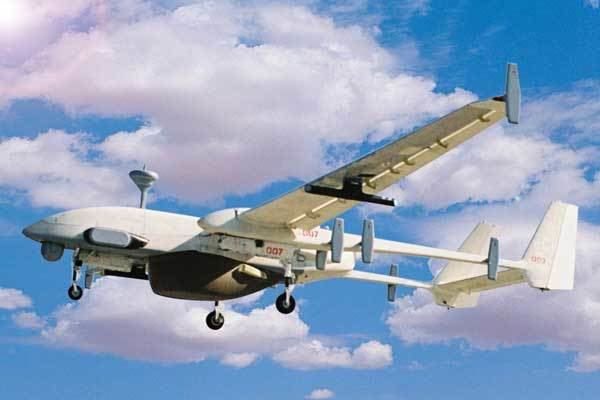
Heron navigates using an internal GPS navigation device, and either a pre-programmed flight profile (in which case the system is fully autonomous from takeoff to landing), manual override from a ground control station, or a combination of both. It can autonomously return to base and land in case of lost communication with the ground station. The system has fully automatic launch and recovery (ALR) and all-weather capabilities.

Heron can carry an array of sensors, including thermographic camera (infrared) and visible-light airborne ground surveillance, intelligence systems (COMINT and ELINT) and various radar systems, totaling up to 250 kg (550 lb). Heron is also capable of target acquisition and artillery adjustment.
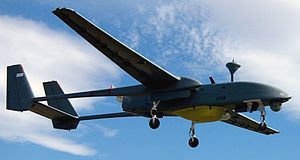
The payload sensors communicate with the ground control station in real time, using either direct line of sight data link, or via an airborne/satellite relay. Like the navigation system, the payload can also be used in either a fully pre-programmed autonomous mode, or manual real-time remote operation, or a combination of both.
Super Heron
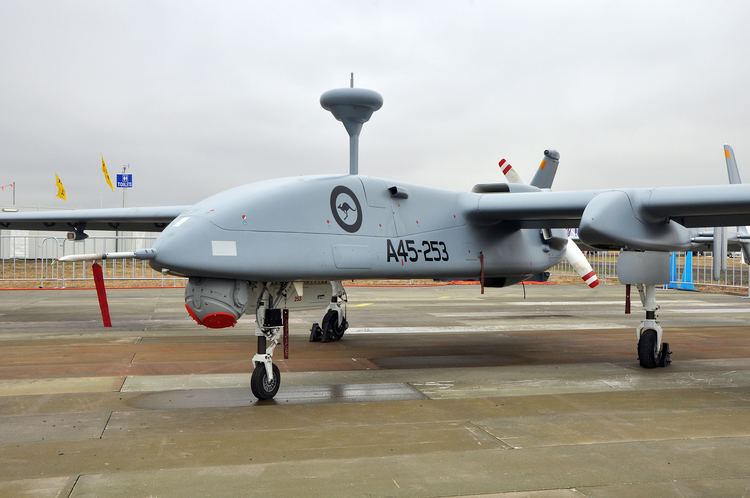
At the Singapore Air Show in February 2014, IAI unveiled the Super Heron refinement of the Heron UAS. The Super Heron has a heavy fuel 200 horsepower engine that increases its rate of climb and performance. Its range is 250 km (160 mi) line-of-sight and 1,000 km (620 mi) by satellite control. Endurance is 45 hours at a maximum altitude of 30,000 ft (9,100 m). Cruising speed is 60 to 80 kn (110 to 150 km/h; 69 to 92 mph) and top speed over 150 kn (280 km/h; 170 mph).
Operational history

The Heron saw significant use during Operation Cast Lead in Gaza of 2008–2009. During the deployment, each brigade combat team was assigned a UAV squadron for close support. This was the first Israeli operation in which UAVs, helicopters, and fighter jets were allocated to ground forces directly without IAF central command authorizing sorties. Air-support controller teams operated alongside brigade commanders at the front emphasizing the brigade commander's utilization of direct air assets. A high degree of situational awareness was achieved by maintaining at least a dozen UAVs in flight over Gaza at all times. Aerial surveillance was provided by Heron and Hermes 450 UAVs and Apache attack helicopters. Along with coordination between the Air Force and ground troops, Israel ground forces were able to utilize cooperation with the Israel Security Agency by having operatives attached to the forward units. This inter-service coordination allowed for a higher level of tactical awareness and the ability to strike time-critical targets.
Other countries operating the Heron include Singapore, India and Turkey. France operates a derivative of Heron named Eagle or Harfang. In 2008, Canada announced a plan to lease a Heron for use in Afghanistan, starting in 2009. As of mid-2009, Australia leased two Herons as part of a multimillion-dollar lease to operate the vehicles in Afghanistan. In early July 2013, the Heron reached 15,000 flight hours over Afghanistan. Australia concluded its use of the Heron in support of Operation Slipper in Afghanistan on 30 November 2014, after it had accumulated 27,000 flight hours.
Heron variants
Operators
Specifications
Data from "Heron/Shoval/Eitan". Israeli-weapons.com. Retrieved 2012-11-18.
General characteristics
Performance
